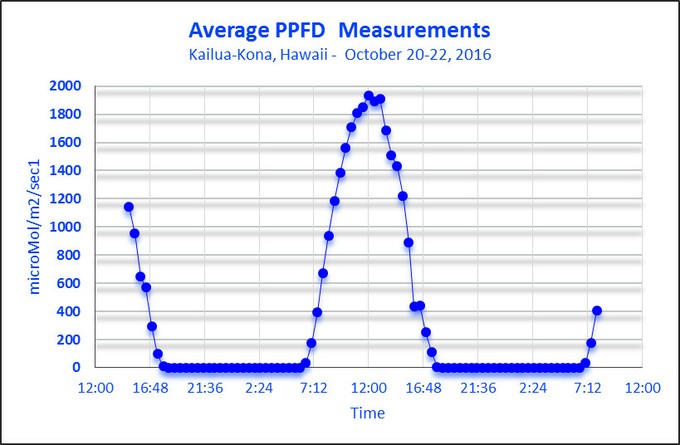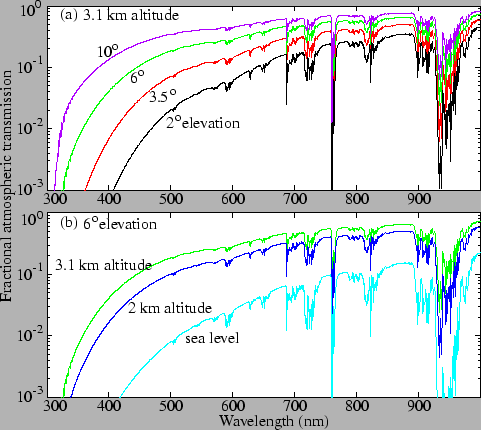Many vendors grow under warmer bulbs. This not only helps growth, but also develops the best colors in the coral. They put them under other lights for illumination (to take the photos). It is the rare light that can both develop and illuminate at the same time.
Navigation
Install the app
How to install the app on iOS
Follow along with the video below to see how to install our site as a web app on your home screen.
Note: This feature may not be available in some browsers.
More options
You are using an out of date browser. It may not display this or other websites correctly.
You should upgrade or use an alternative browser.
You should upgrade or use an alternative browser.
Coral response to high lighting
- Thread starter Brew12
- Start date
- Tagged users None
- Joined
- Sep 18, 2017
- Messages
- 5,625
- Reaction score
- 3,456
photosynthetic photon flux density.... photons over surface area over time.I assume —par per Foot depth?
(μmol/m2/s)
https://fluence.science/science/par-ppf-ppfd-dli/
Just an FYI.. 15.4 degrees North of the equator.. Surface "PAR"... Not 3,6,20ft under water..
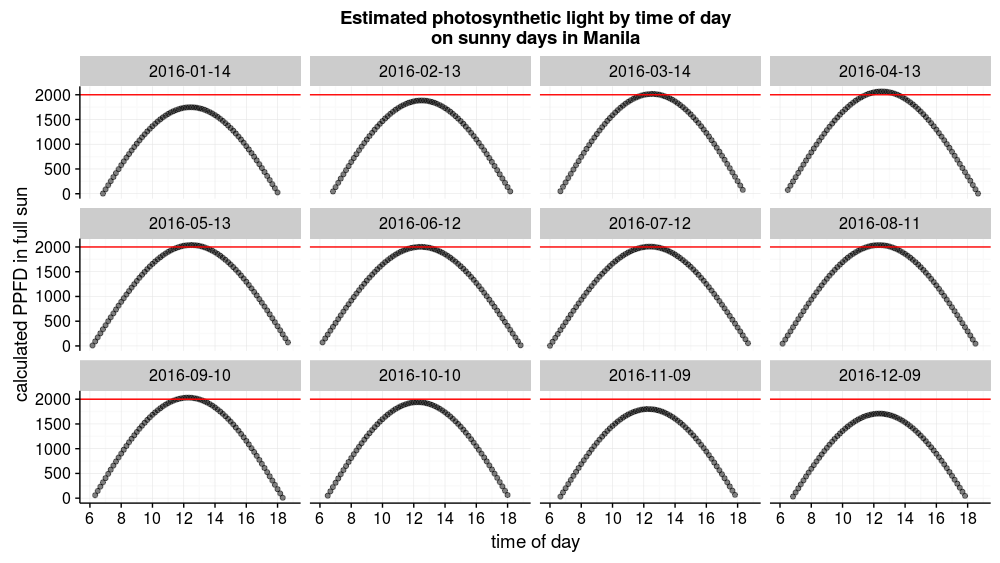
Lets take this light.. 1500 PAR at the surface..If one takes in to account DLI (daily light integral) you might see that yes, LED and any light can exceed sunlight..
PAR only exceeds 1500 for say 5 hours....
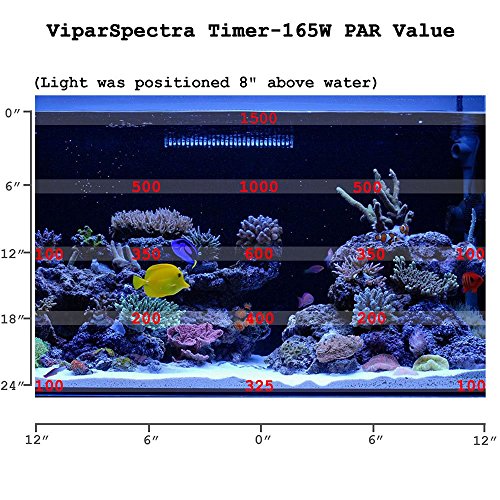
Just something to think about..
Oh Hawaii.. 2" below the water..
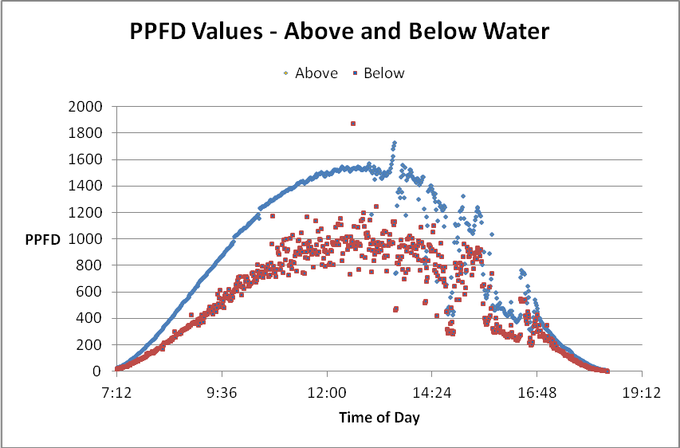
https://www.advancedaquarist.com/2013/9/aafeature
I think this one has that much.
It what large aquariums use. A bay Light. Like in a share house. They were generaly run with 1000 w MH. But several manufacturers make them. That one is SBreeflight. He has them at Disney Florida now.That’s a cool pendent. What brand? I like the ballast up high.
I just took this, outside my house near Boulder, CO. 11:15 without a could in the sky - not even midday. What am I missing? This is an Apogee 510. The reading bounced from 2400 to 2700 ish. I got higher readings than this in Cancun... it was summertime.
I have only every tested MH that get this high... never a LED... but I never had a 1000w LED around to test.

I have only every tested MH that get this high... never a LED... but I never had a 1000w LED around to test.

- Joined
- Sep 18, 2017
- Messages
- 5,625
- Reaction score
- 3,456
Lets kick this up a notch shall we?
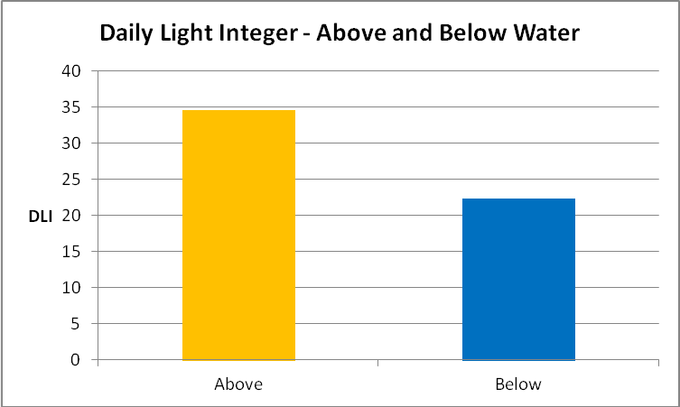
So at the surface in Hawaii DLI is say 35...
Care to guess how much PAR and for how long would exceed that?
Say you have 1000PAR at the surface and run it for 12 hours.. straight on/off
DLI is 43.2.. IF I did this right..
You now exceeded by over 20% the amount of normal light to the corals then they would see in the Hawaiian ocean...
810 PAR of any light at the surface of your tank and = Hawaii.............
Feel free to verify..

So at the surface in Hawaii DLI is say 35...
Care to guess how much PAR and for how long would exceed that?
Say you have 1000PAR at the surface and run it for 12 hours.. straight on/off
DLI is 43.2.. IF I did this right..
You now exceeded by over 20% the amount of normal light to the corals then they would see in the Hawaiian ocean...
810 PAR of any light at the surface of your tank and = Hawaii.............
Feel free to verify..
- Joined
- Sep 18, 2017
- Messages
- 5,625
- Reaction score
- 3,456
Well for one thing you are a mile higher than sea level..I just took this, outside my house near Boulder, CO. 11:15 without a could in the sky - not even midday. What am I missing? This is an Apogee 510. The reading bounced from 2400 to 2700 ish. I got higher readings than this in Cancun... it was summertime.
I have only every tested MH that get this high... never a LED... but I never had a 1000w LED around to test.

If we are kicking it up, then have to figure in coverage. Assuming that 810 PAR is true (who knows, but assume), then unless you are using a large reflector MH or wide T5 setup, you cannot simply just test the hot spot directly under a light and say that you are Hawaii. If the entire top of your tank from front/back and side/side is 810+, then sure. A 4" cone under some focused lenses or small MH reflectors is not exactly Hawaii. It is hard to do this in every inch of your tank like the sun does.
5100 feet is real, but a rounding error in the distance from the sun. I have tried to account for this before and could not find anything helpful - why would there be anything? ...I would not try and have a natural reef here... or even many crops. See if you can come up with a factor - you can search better than I can. The readings were still higher in Cancun - I cannot get around this.
5100 feet is real, but a rounding error in the distance from the sun. I have tried to account for this before and could not find anything helpful - why would there be anything? ...I would not try and have a natural reef here... or even many crops. See if you can come up with a factor - you can search better than I can. The readings were still higher in Cancun - I cannot get around this.
Yes. In both color and intensity.Does the transparency or turbulence of the atmosphere affect PAR readings?
I am not smart enough to figure this out. I am not trying to be a doooche here, just don't get the chart. Sorry... I am a dumbazz most of the time. Is there some sort of a mathematical factor for the altitude? I could probably figure out the distance difference from the sun this time of year, which is probably more than a mile on the tilt. BTW - it is 1:00 now, 2864 on the meter bouncing between 2700 and 2980 (never it 3000) - I have a photo that I can post if you want, but this should be believable.
Seems like the distance on the tilt between Hawaii and Colorado is more than the altitude difference. Are we splitting hairs here? Cancun over Thanksgiving was about 3000 nearly all the time on this same meter... 2200 on cloudy days.
As we have talked about before, the type of meter matters. Mine has the correction factor already built in. There is some explanation for this that lies in the details of the different meters. In any case, my meter measuring a Gen 4 Radion XR30 will not even get over 1200 about 10" under the light... so on any scale, that is less than 2400-2700 outside on a sunny day. As you know, the output drops very fast even a few inches to the left or right, but this light does not claim to be an spread machine.
Seems like the distance on the tilt between Hawaii and Colorado is more than the altitude difference. Are we splitting hairs here? Cancun over Thanksgiving was about 3000 nearly all the time on this same meter... 2200 on cloudy days.
As we have talked about before, the type of meter matters. Mine has the correction factor already built in. There is some explanation for this that lies in the details of the different meters. In any case, my meter measuring a Gen 4 Radion XR30 will not even get over 1200 about 10" under the light... so on any scale, that is less than 2400-2700 outside on a sunny day. As you know, the output drops very fast even a few inches to the left or right, but this light does not claim to be an spread machine.
- Joined
- Sep 18, 2017
- Messages
- 5,625
- Reaction score
- 3,456
http://wellbeing.ihsp.mcgill.ca/publications/cpblThesis/node19.html
Yes it's complicated..
but your missing the main point.. total photons over time..that is the real thing..
10000PAR for 1 hour is less than 1000PAR for 12 hours..
Spot PAr is sort of meaningless.
all you need from the chart is the fact a but load of light is lost from 2Km to sea level..
Yes it's complicated..
but your missing the main point.. total photons over time..that is the real thing..
10000PAR for 1 hour is less than 1000PAR for 12 hours..
Spot PAr is sort of meaningless.
all you need from the chart is the fact a but load of light is lost from 2Km to sea level..
I am not smart enough to figure this out. I am not trying to be a doooche here, just don't get the chart. Sorry... I am a dumbazz most of the time. Is there some sort of a mathematical factor for the altitude? I could probably figure out the distance difference from the sun this time of year, which is probably more than a mile on the tilt. BTW - it is 1:00 now, 2864 on the meter bouncing between 2700 and 2980 (never it 3000) - I have a photo that I can post if you want, but this should be believable.
Seems like the distance on the tilt between Hawaii and Colorado is more than the altitude difference. Are we splitting hairs here? Cancun over Thanksgiving was about 3000 nearly all the time on this same meter... 2200 on cloudy days.
As we have talked about before, the type of meter matters. Mine has the correction factor already built in. There is some explanation for this that lies in the details of the different meters. In any case, my meter measuring a Gen 4 Radion XR30 will not even get over 1200 about 10" under the light... so on any scale, that is less than 2400-2700 outside on a sunny day. As you know, the output drops very fast even a few inches to the left or right, but this light does not claim to be an spread machine.
Totally lost me.http://wellbeing.ihsp.mcgill.ca/publications/cpblThesis/node19.html
Yes it's complicated..
but your missing the main point.. total photons over time..that is the real thing..
10000PAR for 1 hour is less than 1000PAR for 12 hours..
Spot PAr is sort of meaningless.
all you need from the chart is the fact a but load of light is lost from 2Km to sea level..
How are ya gettin 3k par on this planet?
Lol. I wish you had a Lux meter.
Here in San Diego is breezy partly cloudy and 65, 000 lux out.
Which one do you have? Where can I get it? They are cheap, right? Send me a model number. I do not need another $500 meter, but if they are cheap, I will see if I can get one this week. We have no smog or stuff in the air here... which I would think is similar to Hawaii... dunno about The Whale's Vagina.
I do not expect that a hobby grade meter is all that accurate... nor that they will scale from device to device, but I got 1300-1500 PAR under 2 feet of water in Missouri in the summertime (older meter that needed the correction factor). There is something different about the readings. I do expect that this same meter when used on different light sources can at least give us a reasonable ratio from one to another.
I do not expect that a hobby grade meter is all that accurate... nor that they will scale from device to device, but I got 1300-1500 PAR under 2 feet of water in Missouri in the summertime (older meter that needed the correction factor). There is something different about the readings. I do expect that this same meter when used on different light sources can at least give us a reasonable ratio from one to another.
Similar threads
- Replies
- 3
- Views
- 160
- Replies
- 27
- Views
- 1,202








